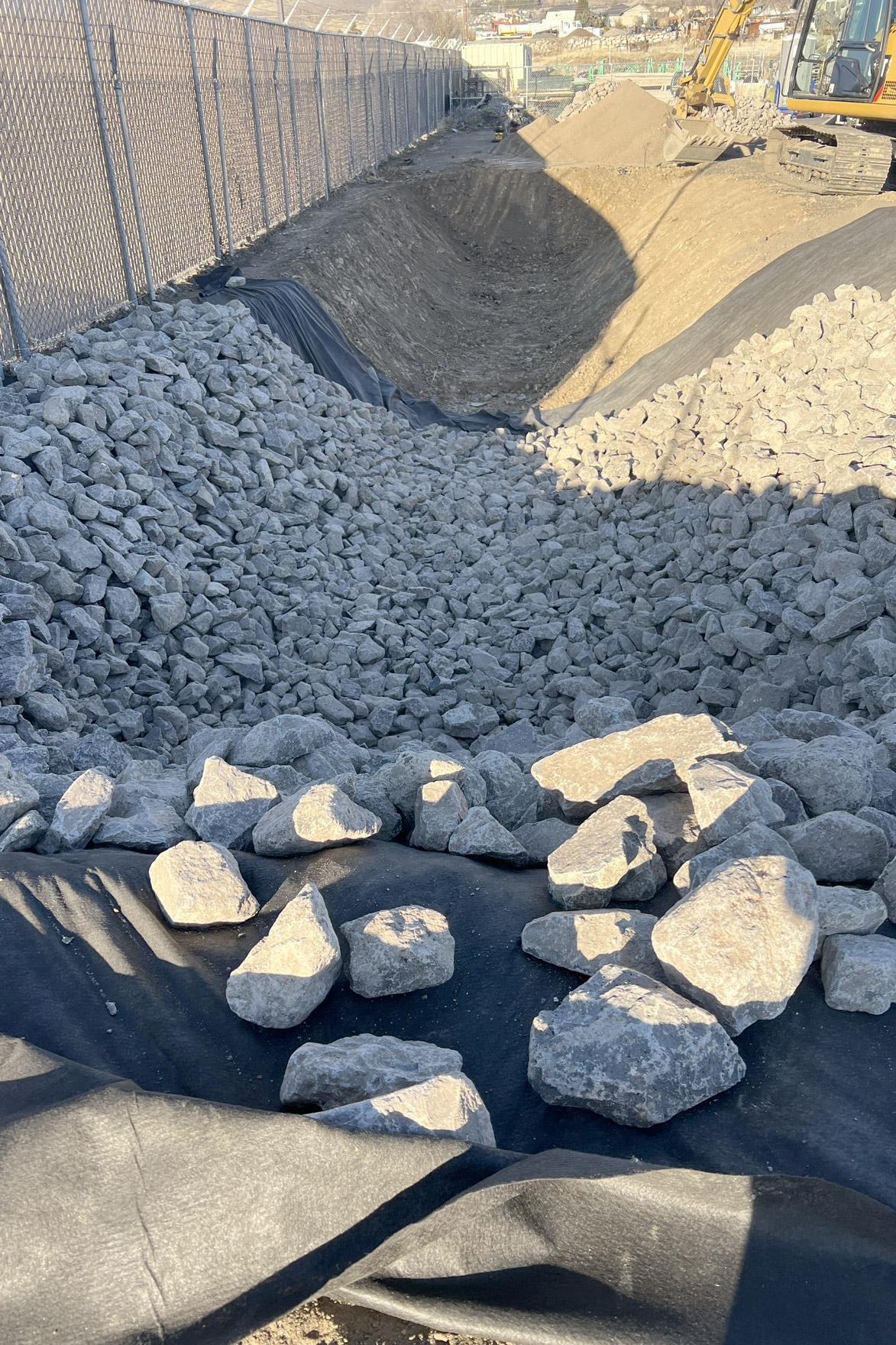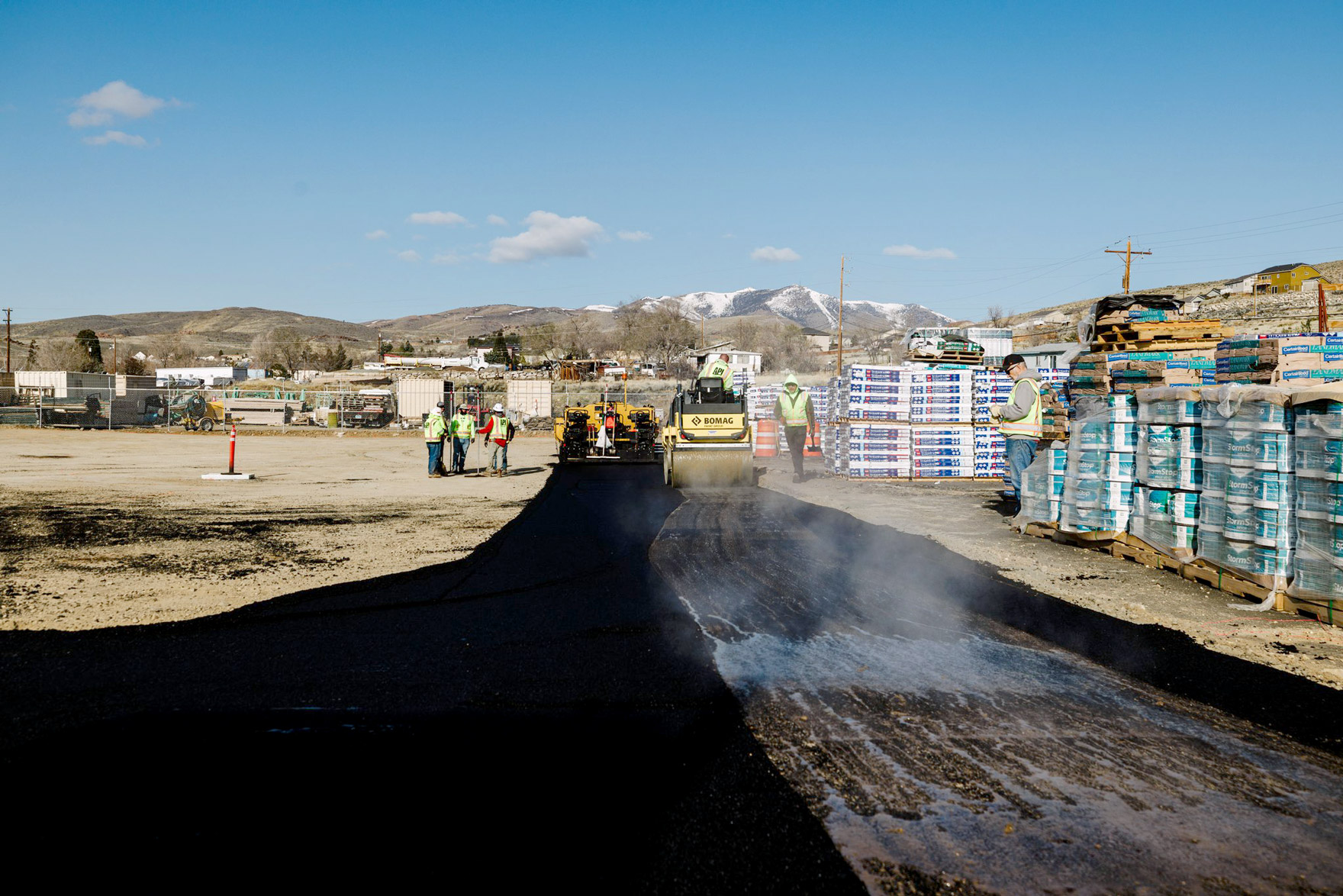Turning a Job Gone Wrong Into a Success
Case Study
Background
On a recent project, API was called in to correct a botched paving job where bad actors in the industry had used fraudulent license numbers and performed substandard work. The previous contractor failed to adhere to industry standards, leaving the customer with a non-functional lot. The asphalt was laid directly on dirt without a proper base, resulting in rapid deterioration. API’s task was to remedy the situation and ensure the lot was functional, durable, and safe.
Some Of The Challenges
- No Base Material: The most significant issue was that the previous company laid the asphalt directly on dirt without any proper base material or compaction. This is a recipe for disaster as the ground was unstable, causing the asphalt to quickly crack and degrade.
- Drainage Problems: The site had poor drainage, contributing to water runoff onto neighboring properties, which created further complications.
The Solution
API’s team began by conducting a thorough site assessment and developed a comprehensive plan to correct the issues. Crucial tasks included:
- New Detention Pond and Drainage Infrastructure: To prevent further water runoff and to meet stormwater management requirements, API installed a new detention pond. The pond would store and infiltrate water, preventing it from running off onto neighboring properties. New grading was also done to ensure water would flow into the pond rather than pooling on the site.
- Pulverizing and Soil Stabilization: The entire area was pulverized to a 12” depth. This process utilized the existing asphalt and incorporated aggregates from the native soils. This step helped to stabilize the soil and create a stronger foundation for the new pavement.
- Concrete Treatment for Soil Stabilization: API chose a concrete treatment approach for soil stabilization. The team mixed concrete and water into the 12” layer of soil to achieve the required structural stability of 95% or better, a necessary step before paving could begin. This method saved the customer both time and money, as it avoided the need to remove and replace 24” of unsuitable soil and transport large amounts of new materials. The concrete was allowed to cure for 72 hours to ensure it was stable enough for paving.
- Paving the Lot: After the curing period, API laid down a 6” layer of asphalt using a PG64-28NV mix. This high-performance mix was selected for its durability, as the lot would need to withstand the weight of fully-loaded semi-trucks and forklifts. The paving process ensured a smooth, durable surface that could handle heavy traffic without deteriorating.

Key Benefits of the API Solution
API’s team began by conducting a thorough site assessment and developed a comprehensive plan to correct the issues. Crucial tasks included:
- Cost Savings: By stabilizing the existing soil rather than removing and replacing it, API significantly reduced the amount of material that needed to be hauled away or imported. Instead of approximately 375 dump truck trips, only 50 were required, saving the customer significant hauling costs and reducing environmental impact.
- Durability: The 6” asphalt layer with a PG64-28NV mix provided the strength and durability needed to accommodate heavy industrial use.
- Improved Drainage: The new detention pond and drainage system solved the runoff issues, protecting both the site and neighboring properties from water damage.


Conclusion
By stepping in with a licensed, experienced team, API was able to turn a disastrous situation into a success story. The project was completed on time, within budget, and to the highest standards. API’s commitment to using proper techniques and materials ensured that the lot was not only functional but built to last, providing the customer with peace of mind and a reliable, safe parking area.
This case underscores the importance of working with a legitimate, licensed contractor. By calling the insurance agency and verifying licensing, customers can avoid the risks of fraud and substandard work, ensuring their projects are completed correctly the first time.